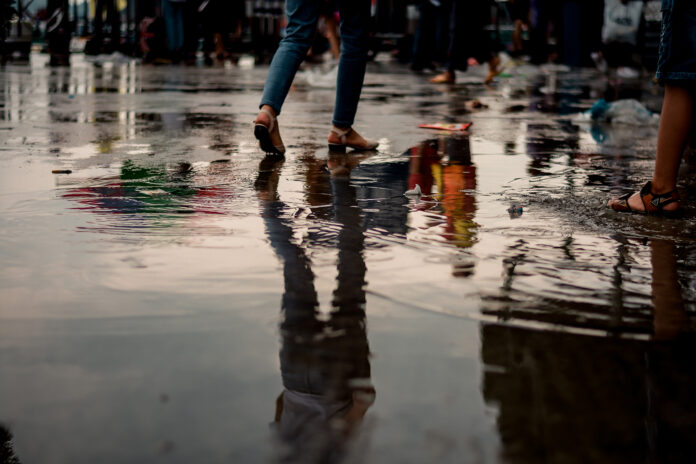Climate change and human interventions in the environment lead to seemingly paradoxical phenomena: while some regions struggle with low groundwater levels, others, or even the same regions, experience increased flooding. How can these two phenomena occur simultaneously, and what are the underlying causes and consequences?
Causes of Low Groundwater Levels
Excessive Water Extraction
One of the main causes of declining groundwater levels is the excessive extraction of water for agricultural irrigation, industrial use, and drinking water. In many parts of the world, especially in intensively farmed areas, more water is being drawn from groundwater reserves than can be replenished by rainfall and river inflow.
Climate Change
Climate change plays a central role in influencing groundwater levels. In many parts of the world, altered precipitation patterns lead to longer dry periods and less replenishment for groundwater reserves. This particularly affects regions already suffering from water scarcity, such as parts of Africa, the Middle East, and South Asia.
Soil Sealing
Urbanization and associated soil sealing from roads, buildings, and other infrastructures prevent rainwater from infiltrating the ground and replenishing groundwater. Instead, the water flows over sealed surfaces into sewage systems or rivers.
Causes and Consequences of Flooding
Extreme Weather Events
Climate change increases the frequency and intensity of extreme weather events, including heavy rains and storms. These events can lead to sudden, massive water accumulations that overwhelm natural drainage and infiltration systems.
Land Use Changes
Urbanization and agricultural restructuring change the landscape and can increase the risk of flooding. Deforestation, especially in mountainous regions, reduces the soil’s water absorption capacity, leading to faster surface runoff and flooding.
Inadequate Infrastructure
Many cities and communities have outdated or inadequate infrastructure to handle large amounts of water. This leads to ineffective drainage of rainwater and accumulation in urban areas, resulting in flooding.
Read also: The importance of sponge landscapes in urban areas
The Paradox: Low Groundwater Levels and Simultaneous Flooding
Hydrological Decoupling
A key concept in explaining the simultaneous existence of low groundwater levels and flooding is hydrological decoupling. Human interventions and climatic changes can disrupt the natural balance between precipitation, surface water, and groundwater. For example, when large amounts of rainwater quickly flow over sealed surfaces, it has no chance to infiltrate the soil and replenish groundwater.
Short-term vs. Long-term Water Dynamics
Floods are often short-term events caused by intense but temporary rainfall. In contrast, low groundwater levels result from long-term water use patterns and slower hydrological processes. Thus, an area can suffer from flooding in the short term while experiencing chronic water scarcity from low groundwater levels in the long term.
Global Examples
1. California, USA: California regularly experiences extreme droughts that lead to low groundwater levels. At the same time, it faces severe flooding during the rainy season caused by heavy rains and melting snow in the mountains. The lack of infrastructure to capture and store water exacerbates the problem.
2. Bangladesh: Known for its devastating floods during the monsoon season, Bangladesh suffers from water scarcity during the dry season, leading to a decline in groundwater levels.
3. Germany: Germany also observes low groundwater levels and flooding. Regions such as Brandenburg and Saxony-Anhalt struggle with declining groundwater due to droughts and intensive agriculture, while heavy rain events lead to sudden floods.
Solutions and Measures
Sustainable Water Management
Sustainable management of water resources is crucial to balance water extraction and replenishment. This can be achieved by reducing water extraction, implementing more efficient irrigation techniques, and promoting water-saving measures.
Green Infrastructure
Implementing green infrastructure, such as rain gardens, permeable pavements, and green roofs, can help absorb rainwater and replenish groundwater. Such measures can also mitigate the impact of flooding by retaining water locally and allowing it to infiltrate.
Improving Flood Protection Systems
To prevent flooding, existing flood protection systems should be improved and new, more efficient systems developed. This includes creating retention basins, restoring floodplains, and modernizing sewage systems.
Promoting Awareness and Education
Raising public awareness of the importance of water management and promoting sustainable practices are crucial for developing long-term solutions. Educational programs and public campaigns can help deepen the understanding of the connections between water use, groundwater, and flooding.
Low groundwater levels and flooding may seem contradictory at first glance, but they are actually two sides of the same coin. They are expressions of a disturbed hydrological balance exacerbated by human activities and climate change. Through sustainable water management, green infrastructure, and improved flood protection measures, we can find ways to address these challenges and achieve a more balanced water cycle.
Sources:
– “Groundwater Depletion” – National Geographic: https://www.nationalgeographic.com/environment/article/groundwater-depletion
– “Flooding: What causes floods?” – NOAA: https://www.noaa.gov/education/resource-collections/freshwater/floods
– “Managing urban flooding and drought” – World Bank: https://www.worldbank.org/en/news/feature/2017/11/14/managing-urban-flooding-and-drought



